International Marketing GLOBAL PRODUCTS AND BRANDS 2







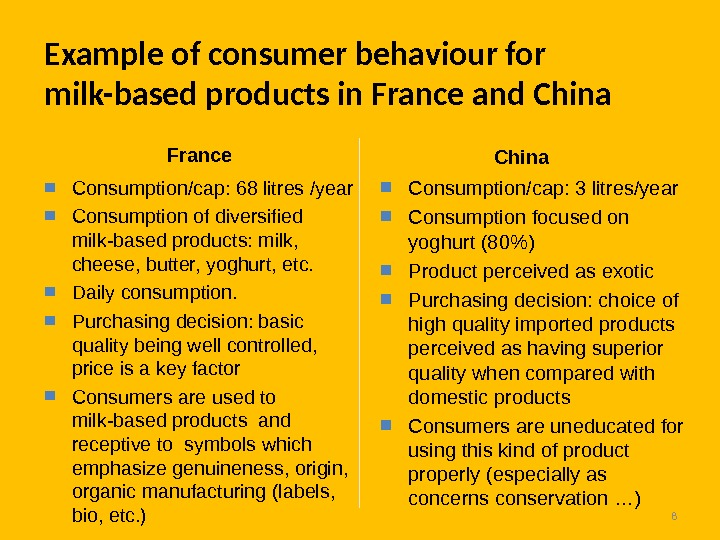



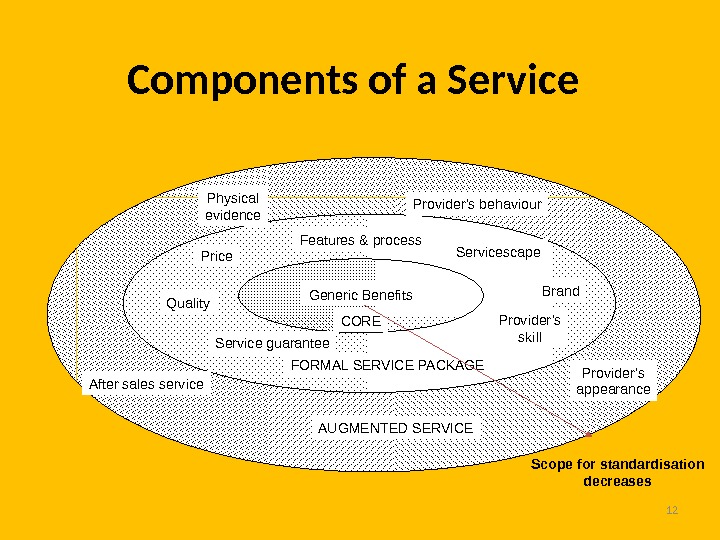
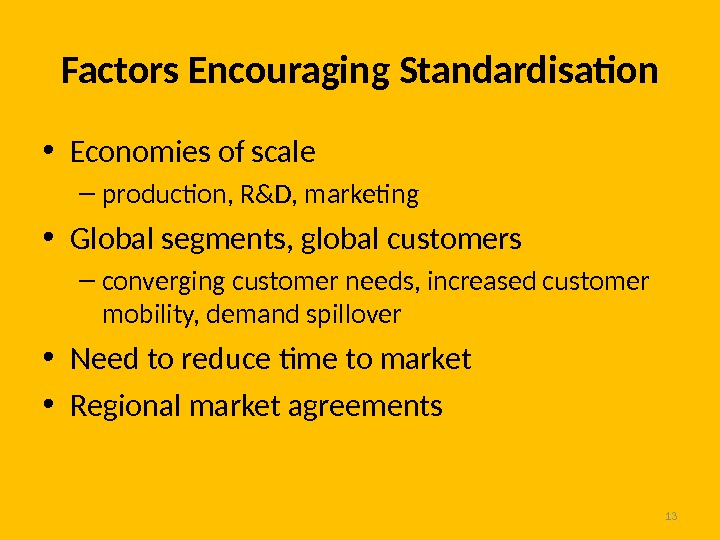

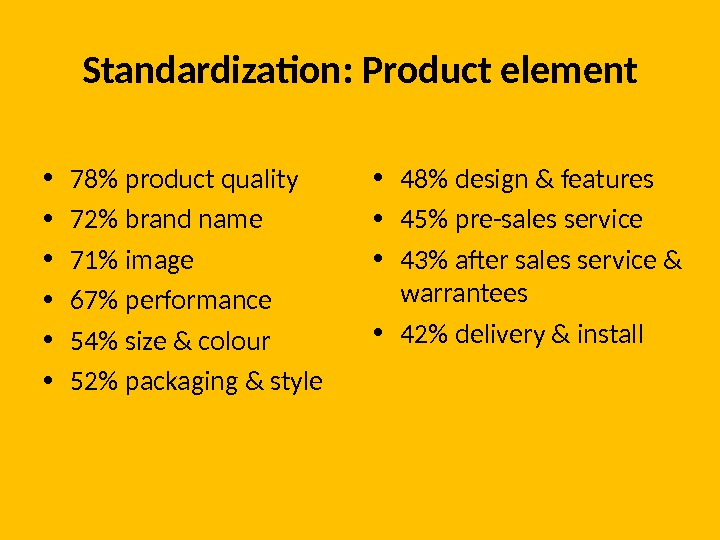
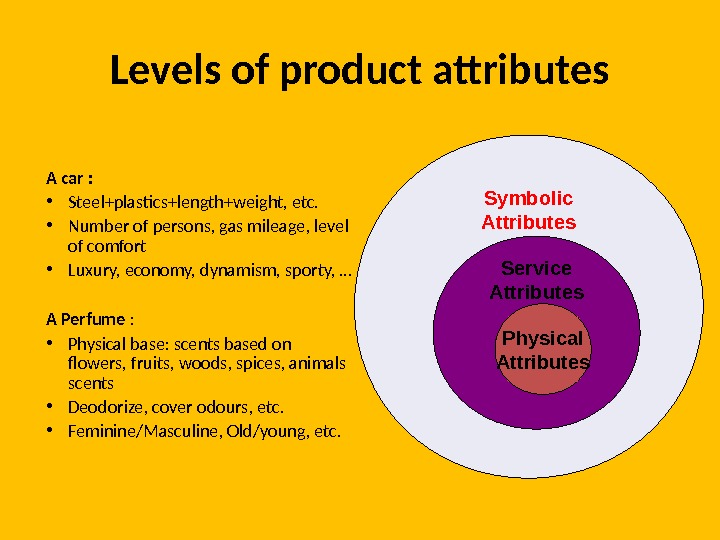
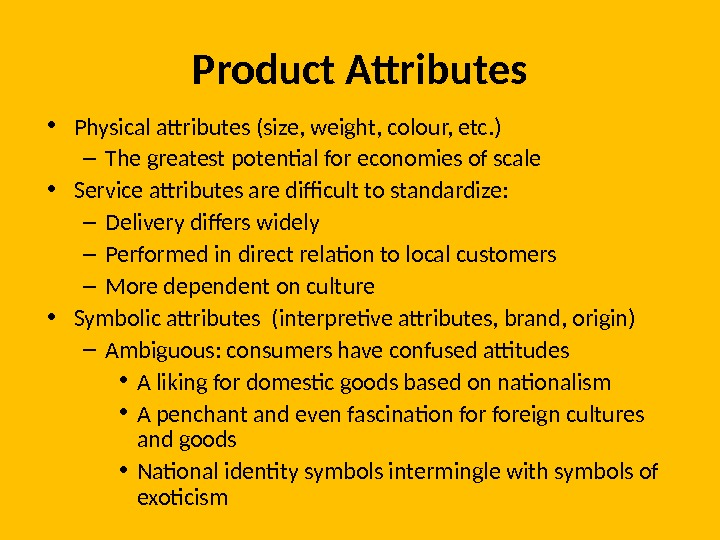

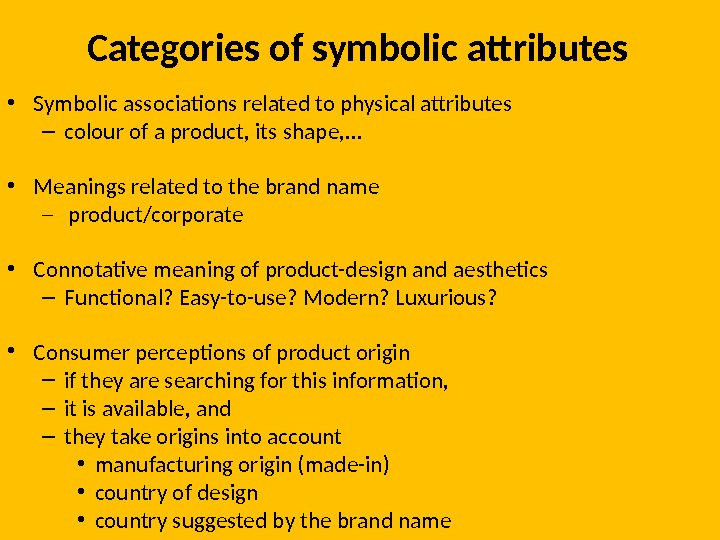
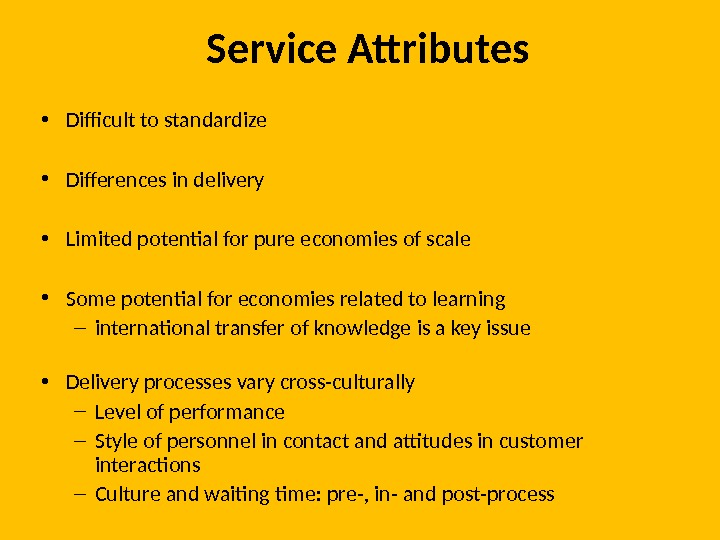
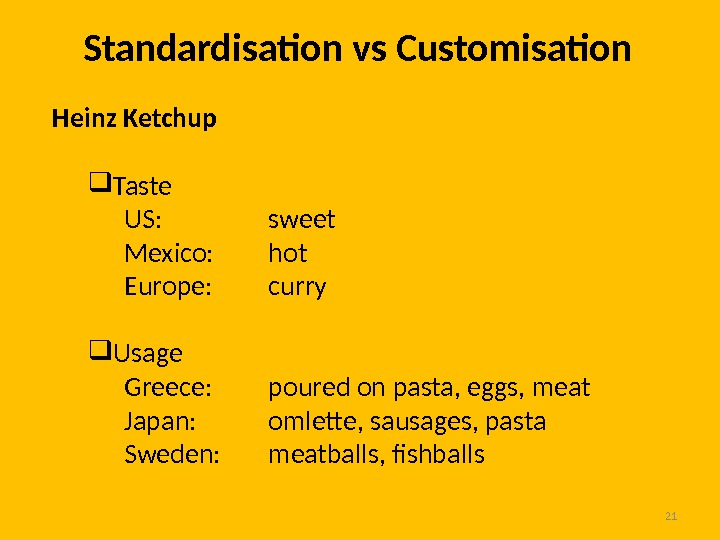
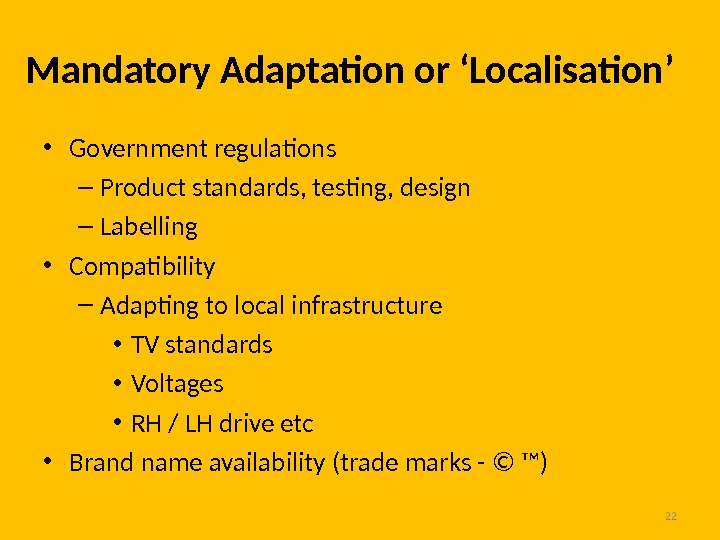

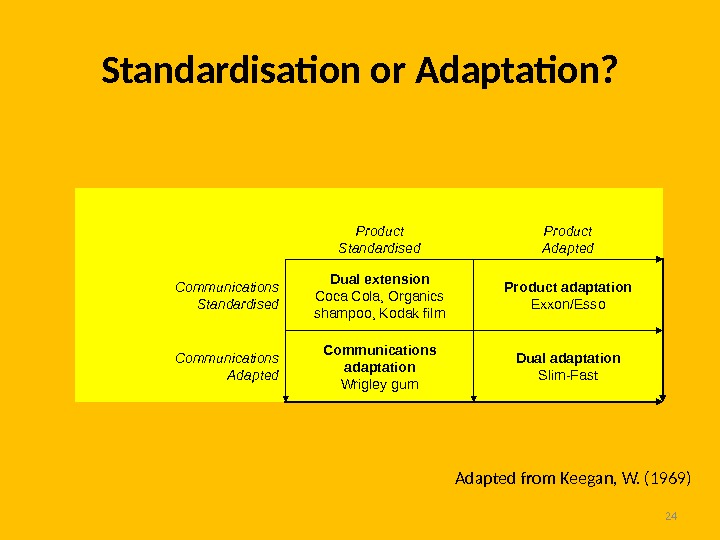









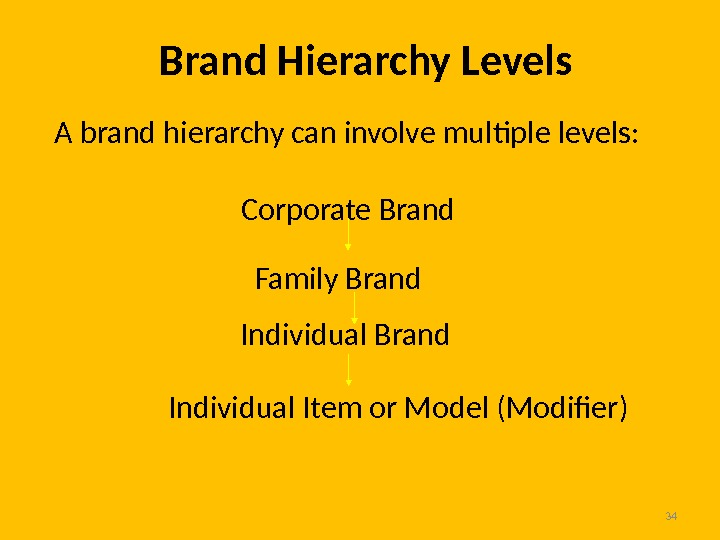
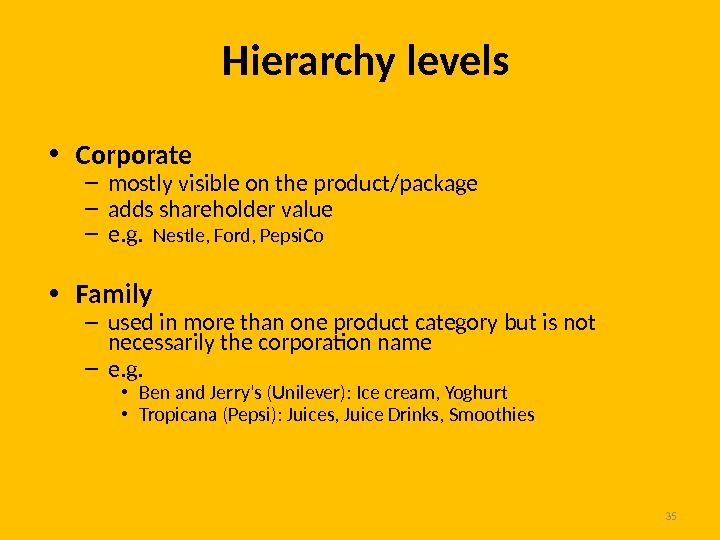
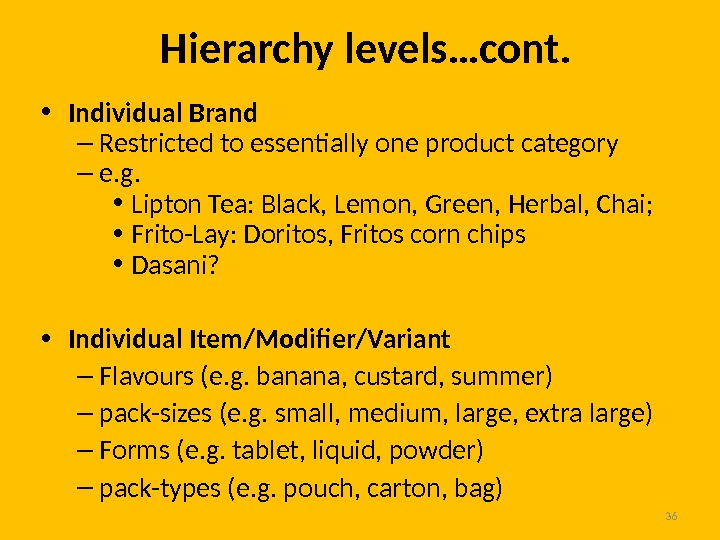

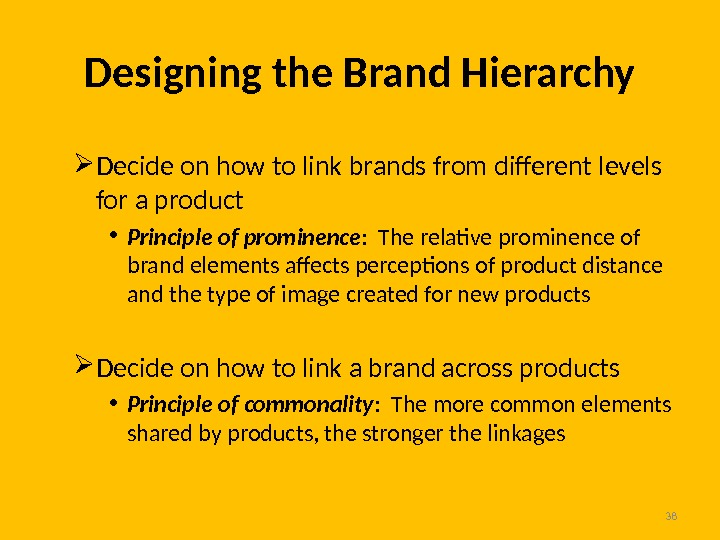
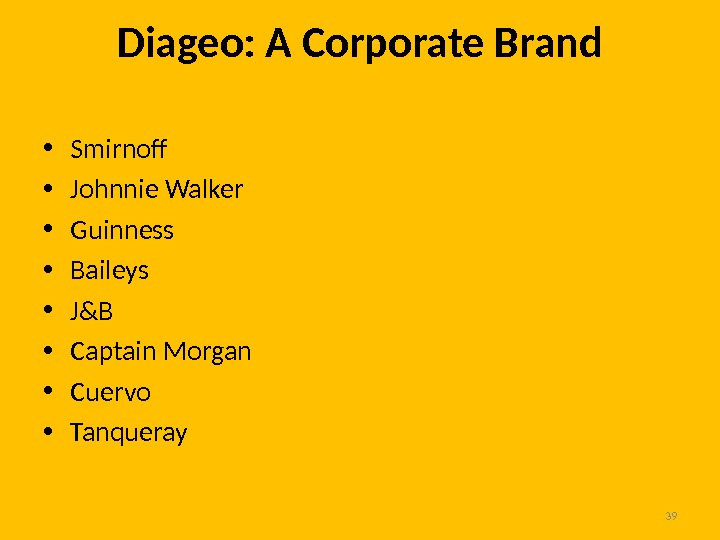










presentation2_brand_and_macrom.ppt
- Размер: 1.2 Mегабайта
- Количество слайдов: 49
Описание презентации International Marketing GLOBAL PRODUCTS AND BRANDS 2 по слайдам
 International Marketing GLOBAL PRODUCTS AND BRANDS
International Marketing GLOBAL PRODUCTS AND BRANDS
 2 Global Product Management Japan USA EU J US EUcore Global Product Management — a core product which can be adapted for different markets to avoid the cost of developing separate products for each.
2 Global Product Management Japan USA EU J US EUcore Global Product Management — a core product which can be adapted for different markets to avoid the cost of developing separate products for each.
 3 Standardisation or Adaptation? • Key question in International Marketing • All elements of the marketing mix can be modified – Do they need to be modified? • Different needs • Different conditions of use or consumption • Extra costs
3 Standardisation or Adaptation? • Key question in International Marketing • All elements of the marketing mix can be modified – Do they need to be modified? • Different needs • Different conditions of use or consumption • Extra costs
 4 Global Convergence of Consumption Patterns • Broad product categories over a long time • Through imitation of foreign consumption patterns and adoption of foreign items which become progressively global and local • Globalization and modernization • Socio-demographic trends – Age, size of household, proportion of immigrants, gender equality
4 Global Convergence of Consumption Patterns • Broad product categories over a long time • Through imitation of foreign consumption patterns and adoption of foreign items which become progressively global and local • Globalization and modernization • Socio-demographic trends – Age, size of household, proportion of immigrants, gender equality
 5 Beer consumption in northern and southern Europe (Source: Smith and Heede, 1996, p. 1081) Macro Trends
5 Beer consumption in northern and southern Europe (Source: Smith and Heede, 1996, p. 1081) Macro Trends
 6050100150200250 1991 1992 1993 1994 1995 1996 1997 1998 1999 2000 2001 Year. Thousands of tons of cheese Source : www. fao. org Consumption of cheese in China (thousands of tons)
6050100150200250 1991 1992 1993 1994 1995 1996 1997 1998 1999 2000 2001 Year. Thousands of tons of cheese Source : www. fao. org Consumption of cheese in China (thousands of tons)
 7 Why are there differences in local consumption patterns? • Climate (e. g. ice-cream) • Local diets (for food and beverages especially) • Local regulations (genetic modifications) • Different use of similar items (Camembert paniert) • Different meaning in context for similar products (colours => certain symbolic attributes) • Differences in motivations and buying behaviour • Local consumption habits rooted in early childhood, and socialization at school and in the family (Vegemite)
7 Why are there differences in local consumption patterns? • Climate (e. g. ice-cream) • Local diets (for food and beverages especially) • Local regulations (genetic modifications) • Different use of similar items (Camembert paniert) • Different meaning in context for similar products (colours => certain symbolic attributes) • Differences in motivations and buying behaviour • Local consumption habits rooted in early childhood, and socialization at school and in the family (Vegemite)
 8 Example of consumer behaviour for milk-based products in France and China Consumption/cap: 68 litres /year Consumption of diversified milk-based products: milk, cheese, butter, yoghurt, etc. Daily consumption. Purchasing decision: basic quality being well controlled, price is a key factor Consumers are used to milk-based products and receptive to symbols which emphasize genuineness, origin, organic manufacturing (labels, bio, etc. ) Consumption/cap: 3 litres/year Consumption focused on yoghurt (80%) Product perceived as exotic Purchasing decision: choice of high quality imported products perceived as having superior quality when compared with domestic products Consumers are uneducated for using this kind of product properly (especially as concerns conservation …)France China
8 Example of consumer behaviour for milk-based products in France and China Consumption/cap: 68 litres /year Consumption of diversified milk-based products: milk, cheese, butter, yoghurt, etc. Daily consumption. Purchasing decision: basic quality being well controlled, price is a key factor Consumers are used to milk-based products and receptive to symbols which emphasize genuineness, origin, organic manufacturing (labels, bio, etc. ) Consumption/cap: 3 litres/year Consumption focused on yoghurt (80%) Product perceived as exotic Purchasing decision: choice of high quality imported products perceived as having superior quality when compared with domestic products Consumers are uneducated for using this kind of product properly (especially as concerns conservation …)France China
 9 Product/Country Example: Rice in Malaysia vs. The United States Malaysia • Mainly local, Thai rice manufacturers • Differentiated by grade • Frequent main dish, crosses social strata • Mainly plain white rice • 10 kilogram bags of rice • Hands also used for serving US • Minute Rice, Rice-a-Roni, Uncle Ben’s • Differentiated by brand, flavour, convenience • Infrequent side dish, ethnic consumption • A lot of flavoured rice • Small, quick cooking portions • Silverware used for rice eating
9 Product/Country Example: Rice in Malaysia vs. The United States Malaysia • Mainly local, Thai rice manufacturers • Differentiated by grade • Frequent main dish, crosses social strata • Mainly plain white rice • 10 kilogram bags of rice • Hands also used for serving US • Minute Rice, Rice-a-Roni, Uncle Ben’s • Differentiated by brand, flavour, convenience • Infrequent side dish, ethnic consumption • A lot of flavoured rice • Small, quick cooking portions • Silverware used for rice eating
 10 Emergence of a global consumer culture • World standard package – Limitations? • ‘Mc. Donaldization’ of society: – Standard (key benefit = predictable performance) – the same for everybody – the same everywhere in the world – the same over time Ritzer (1993): 4 elements 1. Efficiency 2. Systematic quantification 3. Predictability 4. Control: substitution of non-human for human
10 Emergence of a global consumer culture • World standard package – Limitations? • ‘Mc. Donaldization’ of society: – Standard (key benefit = predictable performance) – the same for everybody – the same everywhere in the world – the same over time Ritzer (1993): 4 elements 1. Efficiency 2. Systematic quantification 3. Predictability 4. Control: substitution of non-human for human
 11 Standardisation — Adaptation Tradeof Fully Adapted Fully Standardised. C osts £Opportunity cost of lost orders. Incremental manufacturing costs Combined cost
11 Standardisation — Adaptation Tradeof Fully Adapted Fully Standardised. C osts £Opportunity cost of lost orders. Incremental manufacturing costs Combined cost
 12 Components of a Service Provider’s behaviour. Physical evidence Provider’s appearance. After sales service Generic Benefits COREFeatures & process Servicescape Provider’s skill. Quality Price Service guarantee FORMAL SERVICE PACKAGE AUGMENTED SERVICE Brand Scope for standardisation decreases
12 Components of a Service Provider’s behaviour. Physical evidence Provider’s appearance. After sales service Generic Benefits COREFeatures & process Servicescape Provider’s skill. Quality Price Service guarantee FORMAL SERVICE PACKAGE AUGMENTED SERVICE Brand Scope for standardisation decreases
 13 • Economies of scale – production, R&D, marketing • Global segments, global customers – converging customer needs, increased customer mobility, demand spillover • Need to reduce time to market • Regional market agreements. Factors Encouraging Standardisation
13 • Economies of scale – production, R&D, marketing • Global segments, global customers – converging customer needs, increased customer mobility, demand spillover • Need to reduce time to market • Regional market agreements. Factors Encouraging Standardisation
 Product policy: adapt or standardize Levitt’s (1983) thesis on the globalization of markets • Standardize as much as feasible – a lot can be done • Customize when needed around a standard core product – Coca Cola or Mc. Donald’s • In global industries (more standardization opportunities), firms which standardize show superior performance • Within an industry (similar world markets & opportunities), firms which customize perform better (Samiee & Roth, 1992) • A down-to-earth approach based on product attributes
Product policy: adapt or standardize Levitt’s (1983) thesis on the globalization of markets • Standardize as much as feasible – a lot can be done • Customize when needed around a standard core product – Coca Cola or Mc. Donald’s • In global industries (more standardization opportunities), firms which standardize show superior performance • Within an industry (similar world markets & opportunities), firms which customize perform better (Samiee & Roth, 1992) • A down-to-earth approach based on product attributes
 Standardization: Product element • 78% product quality • 72% brand name • 71% image • 67% performance • 54% size & colour • 52% packaging & style • 48% design & features • 45% pre-sales service • 43% after sales service & warrantees • 42% delivery & install
Standardization: Product element • 78% product quality • 72% brand name • 71% image • 67% performance • 54% size & colour • 52% packaging & style • 48% design & features • 45% pre-sales service • 43% after sales service & warrantees • 42% delivery & install
 Physical Attribute Service Attributes. Symbolic Attributes. Levels of product attributes A car : • Steel+plastics+length+weight, etc. • Number of persons, gas mileage, level of comfort • Luxury, economy, dynamism, sporty, … A Perfume : • Physical base: scents based on flowers, fruits, woods, spices, animals scents • Deodorize, cover odours, etc. • Feminine/Masculine, Old/young, etc. Service Attributes Physical Attributes
Physical Attribute Service Attributes. Symbolic Attributes. Levels of product attributes A car : • Steel+plastics+length+weight, etc. • Number of persons, gas mileage, level of comfort • Luxury, economy, dynamism, sporty, … A Perfume : • Physical base: scents based on flowers, fruits, woods, spices, animals scents • Deodorize, cover odours, etc. • Feminine/Masculine, Old/young, etc. Service Attributes Physical Attributes
 Product Attributes • Physical attributes (size, weight, colour, etc. ) – The greatest potential for economies of scale • Service attributes are difficult to standardize: – Delivery differs widely – Performed in direct relation to local customers – More dependent on culture • Symbolic attributes (interpretive attributes, brand, origin) – Ambiguous: consumers have confused attitudes • A liking for domestic goods based on nationalism • A penchant and even fascination foreign cultures and goods • National identity symbols intermingle with symbols of exoticism
Product Attributes • Physical attributes (size, weight, colour, etc. ) – The greatest potential for economies of scale • Service attributes are difficult to standardize: – Delivery differs widely – Performed in direct relation to local customers – More dependent on culture • Symbolic attributes (interpretive attributes, brand, origin) – Ambiguous: consumers have confused attitudes • A liking for domestic goods based on nationalism • A penchant and even fascination foreign cultures and goods • National identity symbols intermingle with symbols of exoticism
 Factors influencing adaptation or standardization of product attributes
Factors influencing adaptation or standardization of product attributes
 Categories of symbolic attributes • Symbolic associations related to physical attributes – colour of a product, its shape, . . . • Meanings related to the brand name – product/corporate • Connotative meaning of product-design and aesthetics – Functional? Easy-to-use? Modern? Luxurious? • Consumer perceptions of product origin – if they are searching for this information, – it is available, and – they take origins into account • manufacturing origin (made-in) • country of design • country suggested by the brand name
Categories of symbolic attributes • Symbolic associations related to physical attributes – colour of a product, its shape, . . . • Meanings related to the brand name – product/corporate • Connotative meaning of product-design and aesthetics – Functional? Easy-to-use? Modern? Luxurious? • Consumer perceptions of product origin – if they are searching for this information, – it is available, and – they take origins into account • manufacturing origin (made-in) • country of design • country suggested by the brand name
 Service Attributes • Difficult to standardize • Differences in delivery • Limited potential for pure economies of scale • Some potential for economies related to learning – international transfer of knowledge is a key issue • Delivery processes vary cross-culturally – Level of performance – Style of personnel in contact and attitudes in customer interactions – Culture and waiting time: pre-, in- and post-process
Service Attributes • Difficult to standardize • Differences in delivery • Limited potential for pure economies of scale • Some potential for economies related to learning – international transfer of knowledge is a key issue • Delivery processes vary cross-culturally – Level of performance – Style of personnel in contact and attitudes in customer interactions – Culture and waiting time: pre-, in- and post-process
 21 Standardisation vs Customisation Heinz Ketchup Taste US: sweet Mexico: hot Europe: curry Usage Greece: poured on pasta, eggs, meat Japan: omlette, sausages, pasta Sweden: meatballs, fishballs
21 Standardisation vs Customisation Heinz Ketchup Taste US: sweet Mexico: hot Europe: curry Usage Greece: poured on pasta, eggs, meat Japan: omlette, sausages, pasta Sweden: meatballs, fishballs
 22 Mandatory Adaptation or ‘Localisation’ • Government regulations – Product standards, testing, design – Labelling • Compatibility – Adapting to local infrastructure • TV standards • Voltages • RH / LH drive etc • Brand name availability (trade marks — © ™)
22 Mandatory Adaptation or ‘Localisation’ • Government regulations – Product standards, testing, design – Labelling • Compatibility – Adapting to local infrastructure • TV standards • Voltages • RH / LH drive etc • Brand name availability (trade marks — © ™)
 23 Standardisation Continuum Pricing Distribution Sales force Communications Product Positioning Objectives Strategy Easier to adapt Harder to adapt Source: Merffet, (1986)
23 Standardisation Continuum Pricing Distribution Sales force Communications Product Positioning Objectives Strategy Easier to adapt Harder to adapt Source: Merffet, (1986)
 24 Standardisation or Adaptation? Dual adaptation Slim-Fast. Communications adaptation Wrigley gum. Communications Adapted Product adaptation Exxon/Esso. Dual extension Coca Cola, Organics shampoo, Kodak film. Communications Standardised Product Adapted. Product Standardised Adapted from Keegan, W. (1969)
24 Standardisation or Adaptation? Dual adaptation Slim-Fast. Communications adaptation Wrigley gum. Communications Adapted Product adaptation Exxon/Esso. Dual extension Coca Cola, Organics shampoo, Kodak film. Communications Standardised Product Adapted. Product Standardised Adapted from Keegan, W. (1969)
 25 Disadvantages of Standardisation • Unresponsive to local taste – Lost sales due to ‘overstandardisation’ (Kashani, 1989) • Lack of uniqueness • Unresponsive to local competition – Harder to respond to competitive activity – May allow strong local competitors to develop • Demotivates overseas employees – NIH syndrome – Can’t they understand what our market needs?
25 Disadvantages of Standardisation • Unresponsive to local taste – Lost sales due to ‘overstandardisation’ (Kashani, 1989) • Lack of uniqueness • Unresponsive to local competition – Harder to respond to competitive activity – May allow strong local competitors to develop • Demotivates overseas employees – NIH syndrome – Can’t they understand what our market needs?
 26 New Products and Services in Global Marketing • New-product development process – Permanent identification of new-product ideas – Screening of these ideas and identification of candidates for further investigation – Stringent investigation and analysis of the selected new-product ideas – Organisation of sufficient resources • The international new-product department • Testing new products and services in national markets
26 New Products and Services in Global Marketing • New-product development process – Permanent identification of new-product ideas – Screening of these ideas and identification of candidates for further investigation – Stringent investigation and analysis of the selected new-product ideas – Organisation of sufficient resources • The international new-product department • Testing new products and services in national markets
 27 Evaluating Potential of a New Product • How big is the market for this product at various prices? • What are the likely competitive moves in response to our activity? • Can we market the product through existing structure? • Can we source the product at a cost that will yield an adequate profit? • Does product fit our strategic development plan?
27 Evaluating Potential of a New Product • How big is the market for this product at various prices? • What are the likely competitive moves in response to our activity? • Can we market the product through existing structure? • Can we source the product at a cost that will yield an adequate profit? • Does product fit our strategic development plan?
 Global Branding
Global Branding
 29 How Global is Branding? Company Total brands Brands f ound in >50% countries Brands f ound in one country only Colgat e 163 6 59 Kr af t GF 238 6 104 N est lé 560 19 250 P&G 217 18 80 Q uaker 143 2 55 Unilever 471 17 236 Source: Boze and Patton (2005)
29 How Global is Branding? Company Total brands Brands f ound in >50% countries Brands f ound in one country only Colgat e 163 6 59 Kr af t GF 238 6 104 N est lé 560 19 250 P&G 217 18 80 Q uaker 143 2 55 Unilever 471 17 236 Source: Boze and Patton (2005)
 30 Nestle NESCAFE Instant Coffee (16) – Original – Gold Blend – Decaf – Half Caff – Blend 37 – Black Gold – Fine Blend – Alta Rica – Cap Colombie – Kenjara – Espresso – Cappuccino – Mocha – Latté – Café Style – Frappé
30 Nestle NESCAFE Instant Coffee (16) – Original – Gold Blend – Decaf – Half Caff – Blend 37 – Black Gold – Fine Blend – Alta Rica – Cap Colombie – Kenjara – Espresso – Cappuccino – Mocha – Latté – Café Style – Frappé
 31 Kelloggs Breakfast Cereals Brand Portfolio (45) • Corn Pops • Country Store • Crunchy Nut Corn Flakes • Crunchy Nut Bar • Rice Crispies • Frosties • Fruit and Nut • All-bran • Apricot Bites • Bran Flakes Yoghurty • Choco Crispies • Choco Frosties • Choco Pops Crunchies • Choco Pops • Corn Flakes Banana Crunch
31 Kelloggs Breakfast Cereals Brand Portfolio (45) • Corn Pops • Country Store • Crunchy Nut Corn Flakes • Crunchy Nut Bar • Rice Crispies • Frosties • Fruit and Nut • All-bran • Apricot Bites • Bran Flakes Yoghurty • Choco Crispies • Choco Frosties • Choco Pops Crunchies • Choco Pops • Corn Flakes Banana Crunch
 32 Top Ten UK Breakfast Cereal Brands. Breakfast Cereals UK 1999 Market- Share % Brands Kelloggs Cornflakes 9 Weetabix 7 Kelloggs Frosties 4 Nestle Shredded Wheat 3 Kelloggs Rice Krispies 3 Kelloggs Crunchy Nut Cornflakes 2 Nestle Shreddies 2 Kelloggs Healthwise Barn Flakes 2 Quaker Sugar Puffs 2 Weetos (Weetabix)
32 Top Ten UK Breakfast Cereal Brands. Breakfast Cereals UK 1999 Market- Share % Brands Kelloggs Cornflakes 9 Weetabix 7 Kelloggs Frosties 4 Nestle Shredded Wheat 3 Kelloggs Rice Krispies 3 Kelloggs Crunchy Nut Cornflakes 2 Nestle Shreddies 2 Kelloggs Healthwise Barn Flakes 2 Quaker Sugar Puffs 2 Weetos (Weetabix)
 33 Brand Hierarchy • Shows – the ordering of brand elements – captures potential branding relationships among different products sold by the firm – graphic illustration of a firm’s branding strategy • Different ways of defining levels of hierarchy
33 Brand Hierarchy • Shows – the ordering of brand elements – captures potential branding relationships among different products sold by the firm – graphic illustration of a firm’s branding strategy • Different ways of defining levels of hierarchy
 34 Brand Hierarchy Levels Corporate Brand Family Brand Individual Brand Individual Item or Model (Modifier)A brand hierarchy can involve multiple levels:
34 Brand Hierarchy Levels Corporate Brand Family Brand Individual Brand Individual Item or Model (Modifier)A brand hierarchy can involve multiple levels:
 35 Hierarchy levels • Corporate – mostly visible on the product/package – adds shareholder value – e. g. Nestle, Ford, Pepsi. Co • Family – used in more than one product category but is not necessarily the corporation name – e. g. • Ben and Jerry’s (Unilever): Ice cream, Yoghurt • Tropicana (Pepsi): Juices, Juice Drinks, Smoothies
35 Hierarchy levels • Corporate – mostly visible on the product/package – adds shareholder value – e. g. Nestle, Ford, Pepsi. Co • Family – used in more than one product category but is not necessarily the corporation name – e. g. • Ben and Jerry’s (Unilever): Ice cream, Yoghurt • Tropicana (Pepsi): Juices, Juice Drinks, Smoothies
 36 Hierarchy levels…cont. • Individual Brand – Restricted to essentially one product category – e. g. • Lipton Tea: Black, Lemon, Green, Herbal, Chai; • Frito-Lay: Doritos, Fritos corn chips • Dasani? • Individual Item/Modifier/Variant – Flavours (e. g. banana, custard, summer) – pack-sizes (e. g. small, medium, large, extra large) – Forms (e. g. tablet, liquid, powder) – pack-types (e. g. pouch, carton, bag)
36 Hierarchy levels…cont. • Individual Brand – Restricted to essentially one product category – e. g. • Lipton Tea: Black, Lemon, Green, Herbal, Chai; • Frito-Lay: Doritos, Fritos corn chips • Dasani? • Individual Item/Modifier/Variant – Flavours (e. g. banana, custard, summer) – pack-sizes (e. g. small, medium, large, extra large) – Forms (e. g. tablet, liquid, powder) – pack-types (e. g. pouch, carton, bag)
 37 Designing the Brand Hierarchy (Keller 2007) Decide on the number of levels • Principle of simplicity : Employ as few levels as possible • Principle of clarity : Logic and relationship of all brand elements employed must be obvious and transparent Decide on the levels of awareness and types of associations to be created at each level • Principle of relevance : Create global associations that are relevant across as many individual items as possible • Principle of differentiation : Differentiate individual items and brands
37 Designing the Brand Hierarchy (Keller 2007) Decide on the number of levels • Principle of simplicity : Employ as few levels as possible • Principle of clarity : Logic and relationship of all brand elements employed must be obvious and transparent Decide on the levels of awareness and types of associations to be created at each level • Principle of relevance : Create global associations that are relevant across as many individual items as possible • Principle of differentiation : Differentiate individual items and brands
 38 Designing the Brand Hierarchy Decide on how to link brands from different levels for a product • Principle of prominence : The relative prominence of brand elements affects perceptions of product distance and the type of image created for new products Decide on how to link a brand across products • Principle of commonality : The more common elements shared by products, the stronger the linkages
38 Designing the Brand Hierarchy Decide on how to link brands from different levels for a product • Principle of prominence : The relative prominence of brand elements affects perceptions of product distance and the type of image created for new products Decide on how to link a brand across products • Principle of commonality : The more common elements shared by products, the stronger the linkages
 39 Diageo: A Corporate Brand • Smirnoff • Johnnie Walker • Guinness • Baileys • J&B • Captain Morgan • Cuervo • Tanqueray
39 Diageo: A Corporate Brand • Smirnoff • Johnnie Walker • Guinness • Baileys • J&B • Captain Morgan • Cuervo • Tanqueray
 Achieving Global Branding Excellence • Clearly Defined Brand Architecture • Understand potential of each brand in portfolio • Develop strong power brands with broad market footprints • Only introduce sub-brands of a core brand that have clear strategic • roles • Maximize market coverage and minimize overlap of all brands • Co-brand with appropriate brand partners
Achieving Global Branding Excellence • Clearly Defined Brand Architecture • Understand potential of each brand in portfolio • Develop strong power brands with broad market footprints • Only introduce sub-brands of a core brand that have clear strategic • roles • Maximize market coverage and minimize overlap of all brands • Co-brand with appropriate brand partners
 Achieving Global Branding Excellence: an example 41 BMW • Clever straddle positioning with corporate brand • Points-of-parity and points-of-difference • Luxury and Performance • Clearly defined sub-brand roles • Brand hierarchy: 3, 5, & 7 series • New models and brands to expand the brand • footprint • X 3, X 5, Z 4, M 3, 6 series, & Mini • Ingredient brand: Apple i. Pod
Achieving Global Branding Excellence: an example 41 BMW • Clever straddle positioning with corporate brand • Points-of-parity and points-of-difference • Luxury and Performance • Clearly defined sub-brand roles • Brand hierarchy: 3, 5, & 7 series • New models and brands to expand the brand • footprint • X 3, X 5, Z 4, M 3, 6 series, & Mini • Ingredient brand: Apple i. Pod
 Linguistic elements of brands as marketing assets: e. g. Brand Names Brand Name: • Spelling (letters+numbers) – writing systems • Speaking the name – pronunciation and phonology – Matsushita vs. Technics • Denotative meaning – Choco-BN • Connotative meaning – Kinder (semantics) • Rhetorical value – persuasive content (Tide) Visual associated with a brand (logo/design) • The Whiskas example • Visual aspects in ideographic writing systems • Global companies must play on a large register of languages and meanings to develop global brands
Linguistic elements of brands as marketing assets: e. g. Brand Names Brand Name: • Spelling (letters+numbers) – writing systems • Speaking the name – pronunciation and phonology – Matsushita vs. Technics • Denotative meaning – Choco-BN • Connotative meaning – Kinder (semantics) • Rhetorical value – persuasive content (Tide) Visual associated with a brand (logo/design) • The Whiskas example • Visual aspects in ideographic writing systems • Global companies must play on a large register of languages and meanings to develop global brands
 Linguistic characteristics of brands Morphological devices • Affixation: – Jell-O, Tipp-Ex • Compounding : – Janitor-in-a-Drum, Vache-qui-rit IV. Semantic devices: rhetoric • Metaphor : – Aqua-Fresh, Longeurs et Pointes, Head and Shoulders, Tendres Promesses • Metonymy: Application of an object or quality – Midas, Ajax, Uncle Ben’s, Bounty • Personification : Humanizing nonhuman or ascribing human emotions to the inanimate – Clio, Kinder • Oxymoron: Conjunction opposites – Crème de peinture • Paranomasia: Pun and word plays – Fédor — orange juice • Semantic appositeness: Fit of name with object – Nutella
Linguistic characteristics of brands Morphological devices • Affixation: – Jell-O, Tipp-Ex • Compounding : – Janitor-in-a-Drum, Vache-qui-rit IV. Semantic devices: rhetoric • Metaphor : – Aqua-Fresh, Longeurs et Pointes, Head and Shoulders, Tendres Promesses • Metonymy: Application of an object or quality – Midas, Ajax, Uncle Ben’s, Bounty • Personification : Humanizing nonhuman or ascribing human emotions to the inanimate – Clio, Kinder • Oxymoron: Conjunction opposites – Crème de peinture • Paranomasia: Pun and word plays – Fédor — orange juice • Semantic appositeness: Fit of name with object – Nutella
 44 • Bimbo (Spanish bread brand) – Attractive but empty-headed young woman • Bums (Dutch bread brand) – In German associated with sex; In English… • MR 2 (Toyota brand) – Renamed MR in France, MR 2 pronounced as merdeux (‘full of shit’) • Fiat Uno – Not popular in Finland (Uno = dope) • Super Piss – In Finland a popular anti-freeze brand for car locks • Axe (deo) changed to Lynx in the UK Names Problematic Abroad
44 • Bimbo (Spanish bread brand) – Attractive but empty-headed young woman • Bums (Dutch bread brand) – In German associated with sex; In English… • MR 2 (Toyota brand) – Renamed MR in France, MR 2 pronounced as merdeux (‘full of shit’) • Fiat Uno – Not popular in Finland (Uno = dope) • Super Piss – In Finland a popular anti-freeze brand for car locks • Axe (deo) changed to Lynx in the UK Names Problematic Abroad
 45 Brand Globalisation Problems
45 Brand Globalisation Problems
 Recommendations for international brand names • Simple spelling: 2 or 3 syllables – no long sequence of either consonants or vowels – avoid phonemes which are not translinguistic • Avoid unintended meaning in target languages – Chevy Nova / Laque Cabynet / Cue Tooth paste, etc. – Mere translation is dangerous: Tide => Marée (noire) – Transliteration: Gillette’s Silkience (US+D); Soyance (F) => Sientel (I) – Transparence: Sony, National • The loss of a brand source meaning is not a major problem since local consumers reinvest the brand name with new meanings (which may fit with the intended local positioning)
Recommendations for international brand names • Simple spelling: 2 or 3 syllables – no long sequence of either consonants or vowels – avoid phonemes which are not translinguistic • Avoid unintended meaning in target languages – Chevy Nova / Laque Cabynet / Cue Tooth paste, etc. – Mere translation is dangerous: Tide => Marée (noire) – Transliteration: Gillette’s Silkience (US+D); Soyance (F) => Sientel (I) – Transparence: Sony, National • The loss of a brand source meaning is not a major problem since local consumers reinvest the brand name with new meanings (which may fit with the intended local positioning)
 47 Country of Origin efect • Perceptions about and attitudes toward particular countries often extend to products and brands known to originate in those countries – Japan – Germany – France – Italy • Stereotyped attitudes toward foreign products and services can favour or hinder marketing efforts • If the quality is perceived to be low – Foreign origin of the product can be disguised – Foreign identification of the product can be continued and consumer attitudes towards the product can be changed • In some market segments foreign products have a substantial advantage because they are foreign
47 Country of Origin efect • Perceptions about and attitudes toward particular countries often extend to products and brands known to originate in those countries – Japan – Germany – France – Italy • Stereotyped attitudes toward foreign products and services can favour or hinder marketing efforts • If the quality is perceived to be low – Foreign origin of the product can be disguised – Foreign identification of the product can be continued and consumer attitudes towards the product can be changed • In some market segments foreign products have a substantial advantage because they are foreign
 Some examples of the combined influence of brand name and country of origin on product image
Some examples of the combined influence of brand name and country of origin on product image
 CASE STUDY
CASE STUDY
